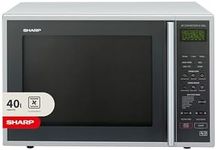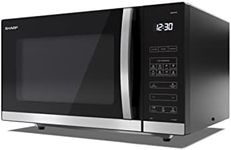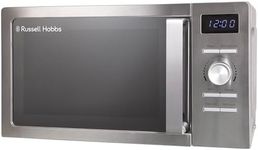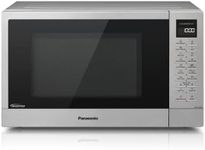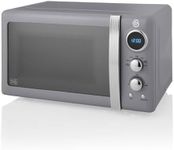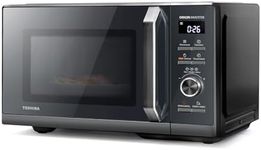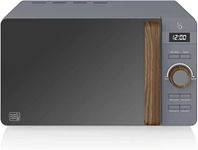Buying Guide for the Best Microwave Oven For Seniors
Choosing the right microwave oven for seniors involves considering ease of use, safety, and functionality. Seniors may have specific needs such as simple controls, clear displays, and safety features. It's important to focus on these aspects to ensure the microwave is user-friendly and meets their daily cooking requirements. Here are some key specifications to consider when selecting a microwave oven for seniors.Control PanelThe control panel is the interface where you set the cooking time, power level, and other functions. For seniors, it's important to have a control panel that is easy to read and use. Look for microwaves with large, clearly labeled buttons and a simple layout. Touchpad controls can be convenient, but dials and knobs might be easier for those with arthritis or limited dexterity. Choose a microwave with a control panel that matches the user's comfort level and physical abilities.
DisplayThe display shows the cooking time, power level, and other settings. A clear, bright display is crucial for seniors, especially those with vision impairments. Look for microwaves with large, high-contrast displays that are easy to read from a distance. Some models offer voice prompts or audible signals, which can be helpful for those with vision difficulties. Ensure the display is easy to understand and provides all necessary information at a glance.
Power LevelMicrowave power is measured in watts and determines how quickly and evenly food cooks. Most microwaves range from 600 to 1200 watts. Higher wattage means faster cooking times, but it can also mean more complex controls. For seniors, a microwave with a power level between 700 and 900 watts is usually sufficient and easier to manage. Consider the user's cooking habits and choose a power level that balances efficiency with simplicity.
Size and CapacityMicrowave ovens come in various sizes and capacities, typically measured in cubic feet. A compact microwave (0.5 to 0.8 cubic feet) is suitable for small kitchens and simple reheating tasks, while a mid-sized microwave (0.9 to 1.2 cubic feet) offers more versatility for cooking larger meals. For seniors, a mid-sized microwave is often a good choice as it provides enough space without being too bulky. Consider the available kitchen space and the types of dishes the user will be preparing.
Safety FeaturesSafety features are crucial for seniors to prevent accidents and ensure safe operation. Look for microwaves with features like a child lock, which prevents accidental use, and an automatic shut-off, which turns off the microwave if it runs too long. Some models also have cool-touch exteriors to prevent burns. Choose a microwave with safety features that provide peace of mind and protect the user from potential hazards.
Pre-programmed SettingsPre-programmed settings, or presets, are convenient options for cooking common foods like popcorn, vegetables, or beverages with the press of a button. These settings simplify the cooking process and reduce the need for manual adjustments. For seniors, microwaves with a few essential presets can make cooking easier and more intuitive. Ensure the presets are clearly labeled and relevant to the user's cooking habits.
Ease of CleaningA microwave that is easy to clean will save time and effort. Look for models with a smooth interior surface, such as ceramic enamel, which resists stains and is easy to wipe down. Removable turntables and racks can also make cleaning more convenient. For seniors, a microwave that requires minimal maintenance and is easy to keep clean will be more practical and user-friendly.
